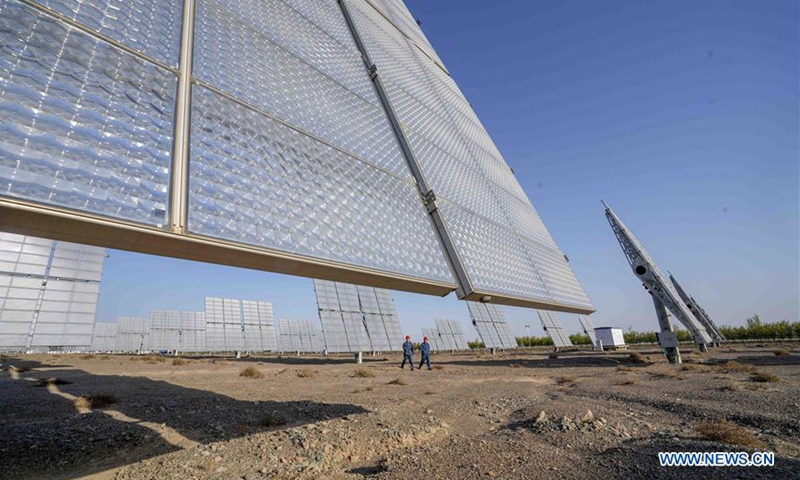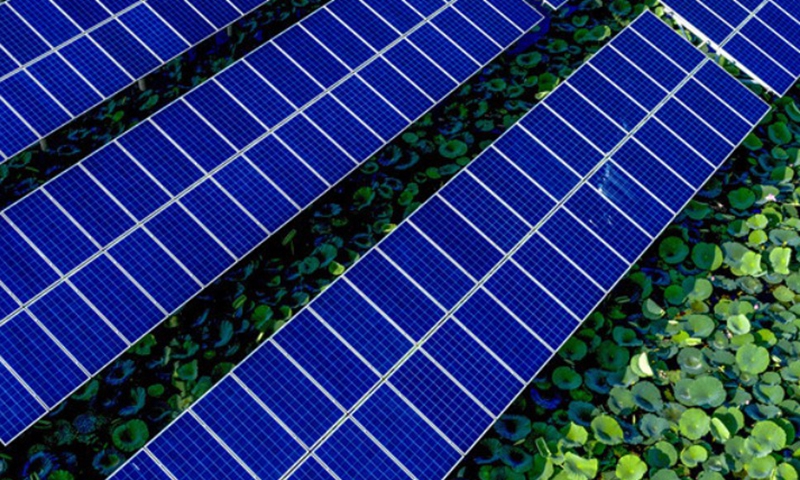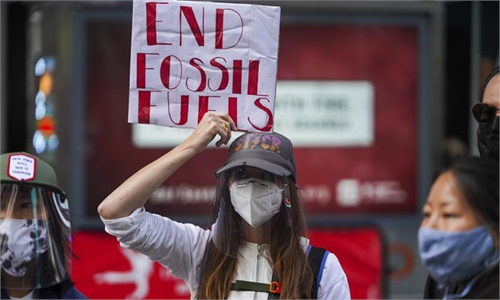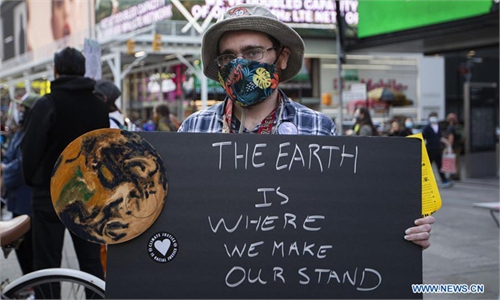
Members of staff work at the Shichengzi photovoltaic power station in Hami, northwest China's Xinjiang Uygur Autonomous Region, April 24, 2020. Northwest China's Xinjiang Uygur Autonomous Region transmitted 300 billion kWh of electricity outside the region over a decade, said the State Grid's Xinjiang branch Saturday. The electricity transmission helped China's central and eastern regions reduce about 96 million tonnes of coal use, and cut carbon dioxide and sulfur dioxide emissions by 259.2 million tonnes and 816,000 tonnes, respectively. (Xinhua/Zhao Ge)

The undated photo shows the solar energy panels installed in a village in Lu Jiang county in Hefei, capital city of Anhui Province of China. (Xinhua photo)
China's CO2 emissions could plateau by 2025 before beginning to decline around 2030 with reinforced management policies in emission reduction, according to a report on China's low-carbon development published by a top environment institute on Monday.
China is showing the country is capable of maintaining fast economic development even while reducing carbon emissions, said Xie Zhenhua, a top Chinese climate advisor.
The report, titled China's Long-term Low-carbon Development Strategy and Pathway, brought forward suggestions for China's strategy, path, technology and policy for low-carbon development to 2050. The project gathered China's top experts in environment and energy, and was published by the Institute of Climate Change and Sustainable Development of Tsinghua University.
The report discussed four scenarios for achieving China's goal in cutting carbon emission, He Jiankun, Deputy Director of the National Committee of Experts on Climate Change and former president of Tsinghua University, said at a press conference on Monday.
By reinforcing China's emission reduction strategy, the reduction of CO2 intensity per unit of GDP could keep at around 20 percent during the 14th Five-Year Plan (2021-25) and 15th Five-Year Plan (2026-30), the report reads.
China aims to have CO2 emissions peak before 2030 and achieve carbon neutrality before 2060, according to the Xinhua News Agency.
The policies and actions to confront climate change do not hinder economic development, and can lift the quality of economic growth, foster and promote new industries and markets, enlarge employment, improve livelihoods, protect the environment and improve people's health, said Xie Zhenhua, Special Advisor on Climate Change Affairs of China, Ministry of Ecology and Environment and President of the Institute of Climate Change and Sustainable Development of Tsinghua University.
Compared with 2005, CO2 emissions per unit of GDP has dropped 48 percent by 2019 in China, equaling a reduction of 5.62 billion tons of CO2 emission, 11.92 million tons of SO2 emission and 11.3 million tons of NOx, according to Xie.
Meanwhile, China's GDP increased more than four times, and 95 percent of poverty-stricken population has shaken off poverty during the period. Coal consumption dropped to 55.7 percent of energy production from 72.4 percent and non-fossil energy accounted for 15.3 percent of energy production, according to Xie.
Xie stressed that China faces huge challenges in realizing low-carbon development. The manufacturing industry is still a high-energy consumer, making economic restructuring and industrial upgrading an arduous task.
Coal consumption still accounts for more than 50 percent energy production in China, and the CO2 intensity per energy unit is 30 percent higher than world average. Energy consumption per unit of GDP remains high, at about 1.5 times the world average and 2 to 3 times that of developed countries, Xie noted.
Zhao Yingmin, Deputy Minister of the Ministry of Ecology and Environment, revealed at the conference that the ministry will work with relevant departments to study and put forward a strong 14th Five-Year Plan carbon emission target, formulate an action plan for CO2 emissions to peak, and accelerate the promotion of a national carbon market.
China will have to make greater efforts to realize carbon neutrality than developed countries, He said. Though green economic revival has been an international consensus, the US is obviously intent on suppressing and isolating China in the post-pandemic era, and confronting climate change will be a key area of competition between big powers, He noted.




